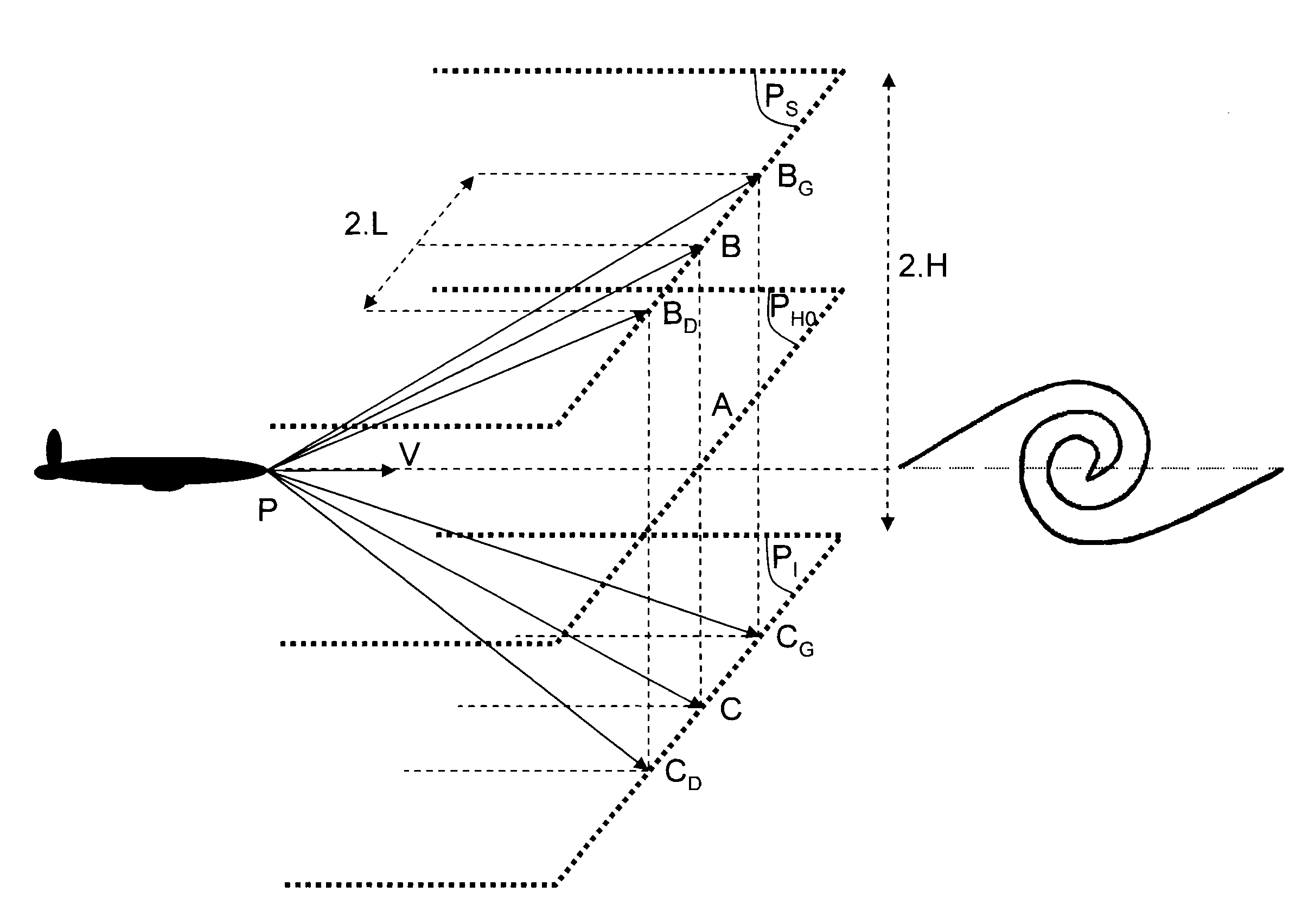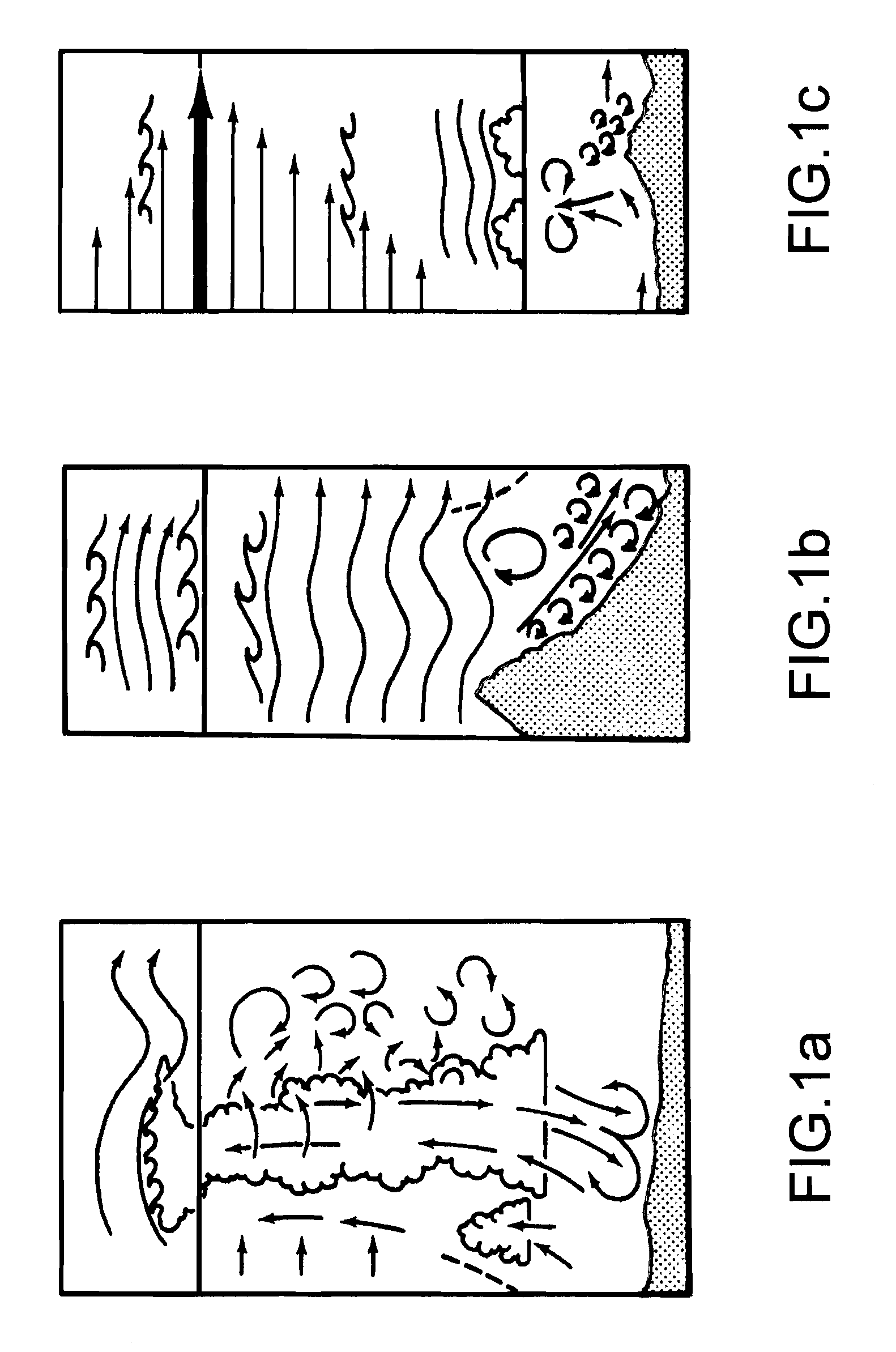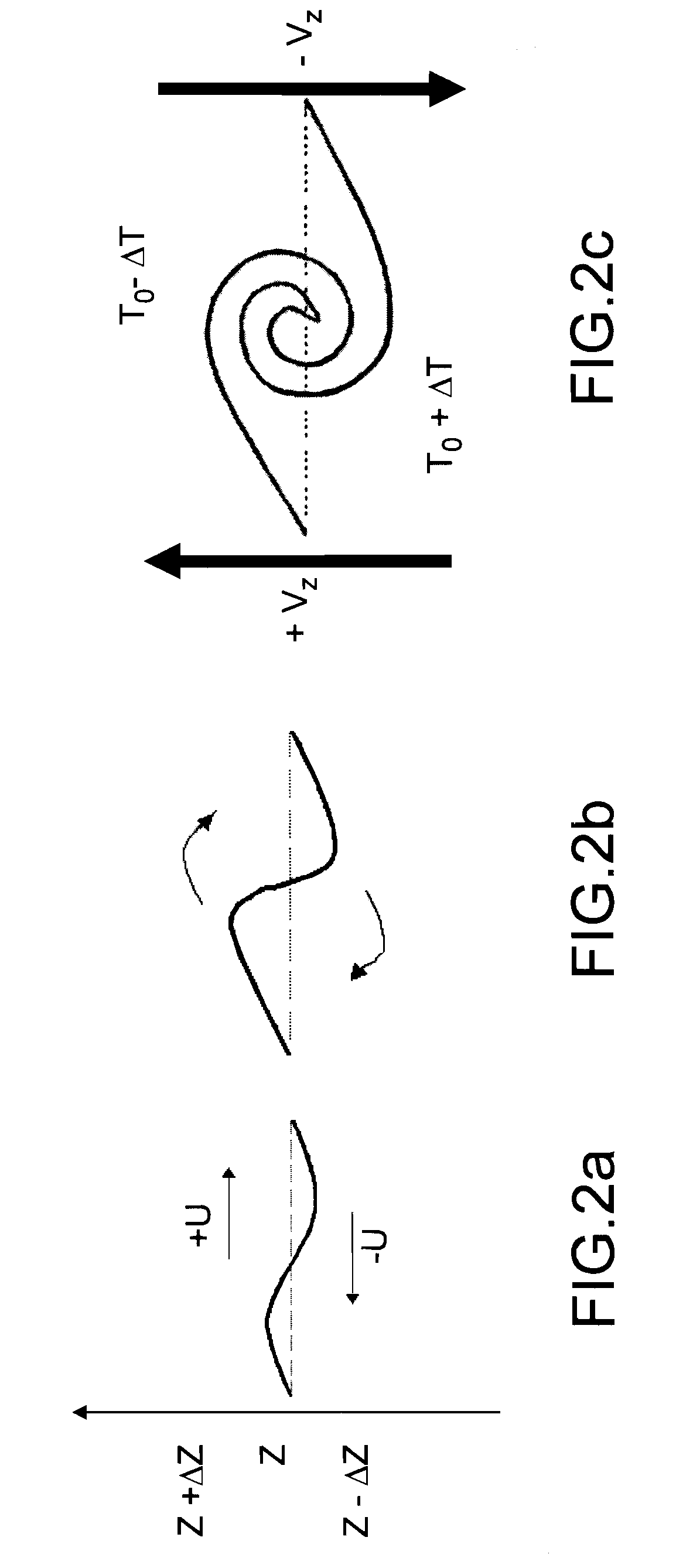Method and device for protecting an aircraft against clear air turbulence
a clear air turbulence and aircraft technology, applied in the field of methods and devices, can solve the problems of different damaging effects of turbulence on the aircraft, damage to the structure of the aircraft, impact between people and walls, etc., and achieve the effects of high frequency evaluation, simple and inexpensive analysis, and high ra
- Summary
- Abstract
- Description
- Claims
- Application Information
AI Technical Summary
Benefits of technology
Problems solved by technology
Method used
Image
Examples
Embodiment Construction
[0065]From one figure to another, the same elements are identified by the same references.
[0066]In the presence of a horizontal wind gradient between two air layers and in certain atmospheric conditions, a Kelvin-Helmholtz instability phenomenon can occur, characterized by a local appearance of a vertical speed difference Vz and a temperature variation between these two layers leading to the formation of a roll. The vertical speed difference can be the cause of temporary changes to the angle of incidence of an aircraft affecting the lift of the aircraft.
[0067]FIGS. 2a, 2b and 2c represent a formation of clear air turbulence at three successive moments.
[0068]An index evaluating a ratio between a kinetic energy and a potential energy of horizontally-layered clouds provides a way of revealing a clear air turbulence from a temperature gradient map and an air speed gradient map.
[0069]The Richardson number Ri is such an index: its expression is as follows:
[0070]Ri=gⅆθpⅆzθp(ⅆUⅆz)2=N2(ⅆUⅆ...
PUM
 Login to View More
Login to View More Abstract
Description
Claims
Application Information
 Login to View More
Login to View More - R&D
- Intellectual Property
- Life Sciences
- Materials
- Tech Scout
- Unparalleled Data Quality
- Higher Quality Content
- 60% Fewer Hallucinations
Browse by: Latest US Patents, China's latest patents, Technical Efficacy Thesaurus, Application Domain, Technology Topic, Popular Technical Reports.
© 2025 PatSnap. All rights reserved.Legal|Privacy policy|Modern Slavery Act Transparency Statement|Sitemap|About US| Contact US: help@patsnap.com



